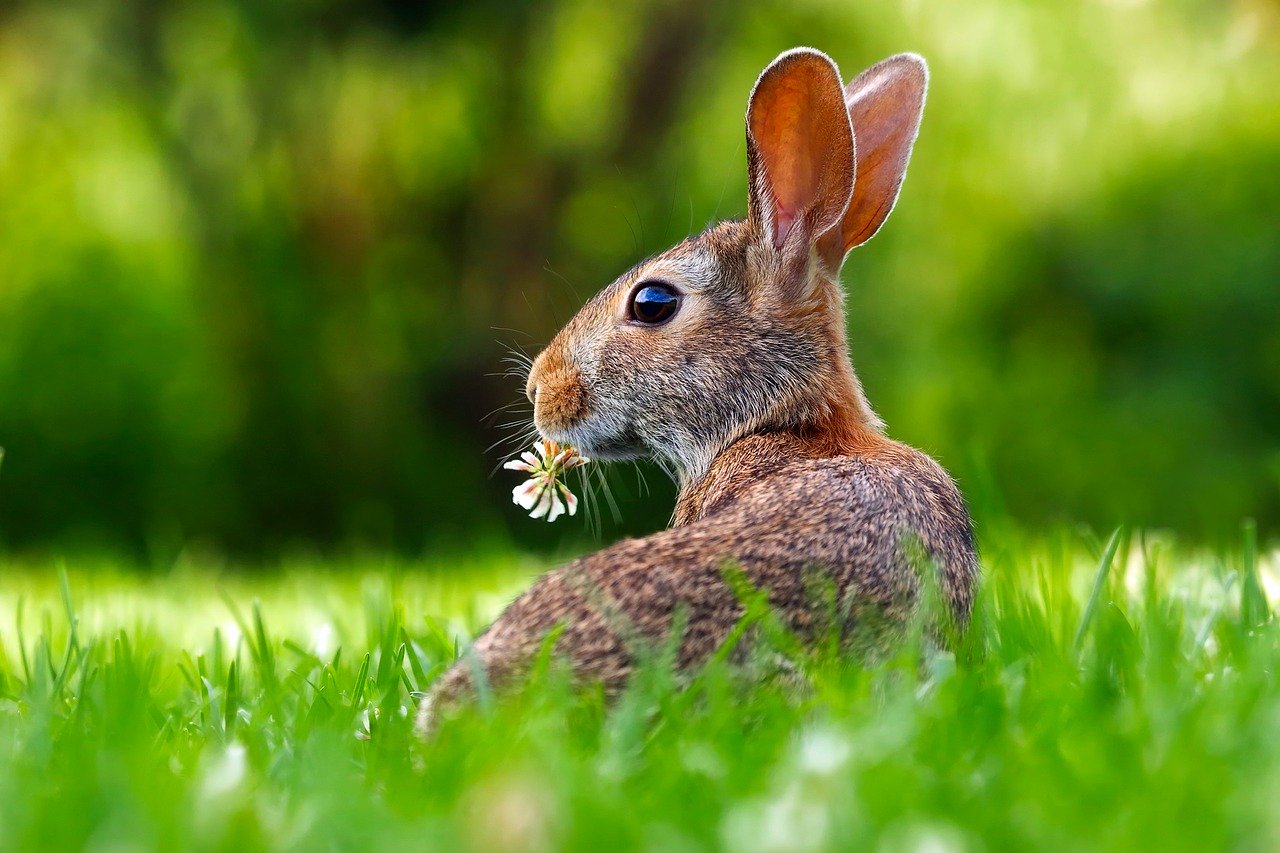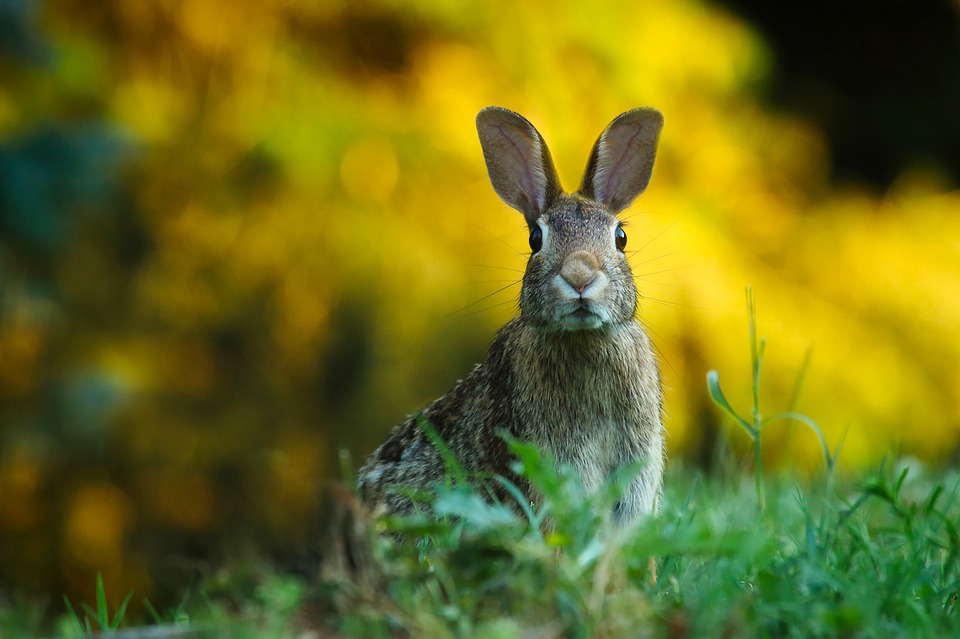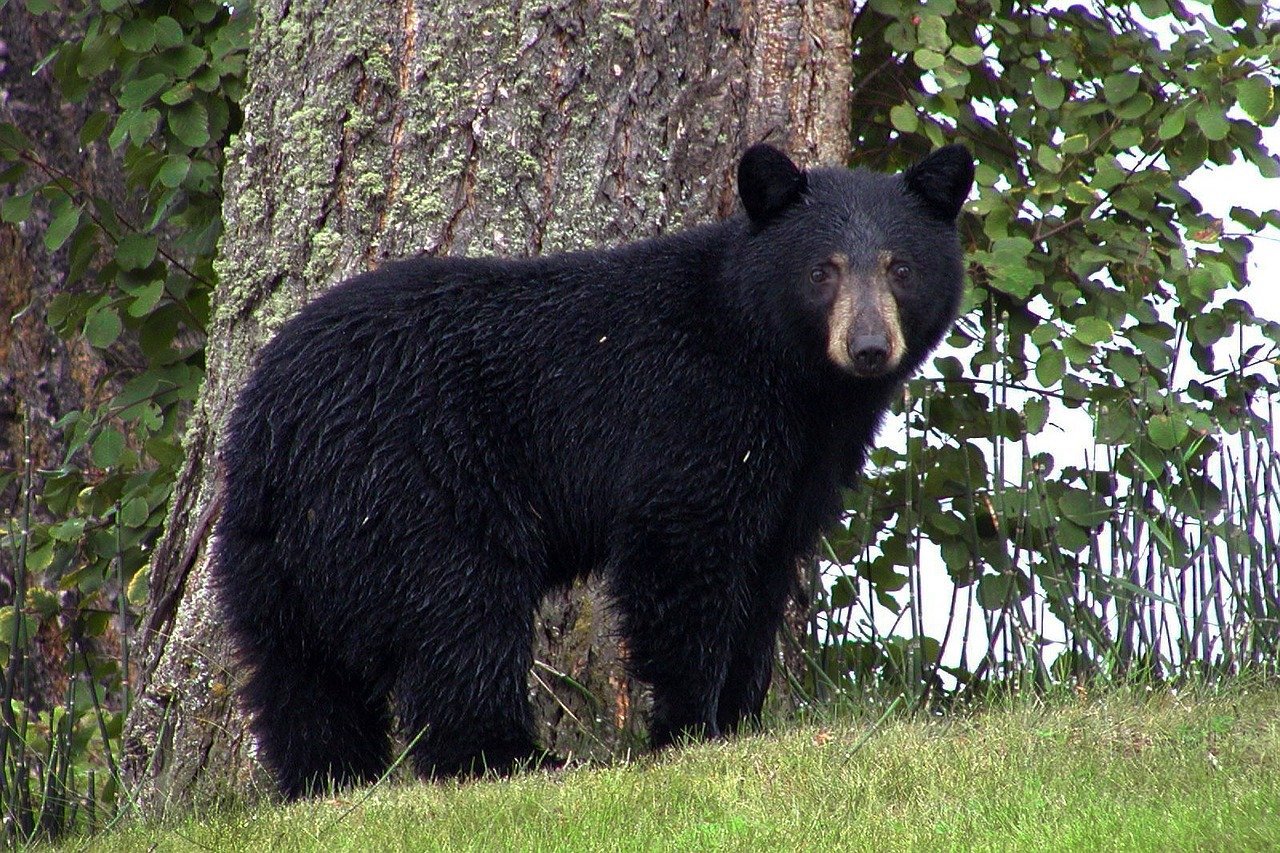Anyone can participate, and rabbit sightings will help the NH Rabbit Reports team learn more about where rabbit species are located in the state. Do you have a rabbit spending time in your yard? Did you spot one on a recent outdoor adventure? You can use your smartphone or computer to submit your sighting information and a photograph to NH Rabbit Reports, and no species identification skills are required.
New Hampshire is home to two species of rabbits, the Eastern cottontail and the New England cottontail, as well as one species of hare, the snowshoe hare. NH Rabbit Reports sighting information helps researchers understand the distribution and potential abundance of these species. By understanding the relationship between the distributions of the two rabbit species, organizations and state agencies can make informed decisions about habitat management. This is vital for rabbit species, particularly for the New England cottontail, which is classified as a state-endangered species in New Hampshire.

“Winter is a great time to keep an eye out for rabbits and submit your sightings,” says Haley Andreozzi, wildlife outreach manager for UNH Cooperative Extension and a NH Rabbit Reports team member. “While they’re not as active as they are in the warmer months, a photograph of a brown rabbit can help us determine that the sighting is in fact of a cottontail and not a snowshoe hare, which turn white in the winter.”
The New England cottontail is native to New Hampshire, but has seen dwindling population numbers over the past several decades throughout its range, mostly due to habitat loss and fragmentation. The species requires large areas of early-successional habitat to avoid predators, and they typically don’t venture far from thick shrubs and young trees. Meanwhile, eastern cottontails are able to venture farther from protective cover and are better equipped to survive in the human-dominated habitats of New England.
N.H. Fish and Game coordinates a comprehensive effort to survey for the presence of New England cottontail rabbits in and around the areas where they are known to be present. However, less is known about where and in what numbers eastern cottontails are found in the state.
“We have received hundreds of sightings from people in New Hampshire reporting the rabbits they see,” said Heidi Holman, a wildlife biologist who coordinates N.H. Fish and Game’s New England cottontail restoration efforts. “The Rabbit Reports website gives us the opportunity to build a map and database of all this information to collect distribution information about eastern cottontail rabbits in one place.”
NH Rabbit Reports is sponsored by UNH Cooperative Extension and the New Hampshire Fish and Game Department, with support from the Wildlife Heritage Foundation of New Hampshire. For more information, visit the project website at nhrabbitreports.org or contact Haley Andreozzi at haley.andreozzi@unh.edu or (603) 862-5327.




